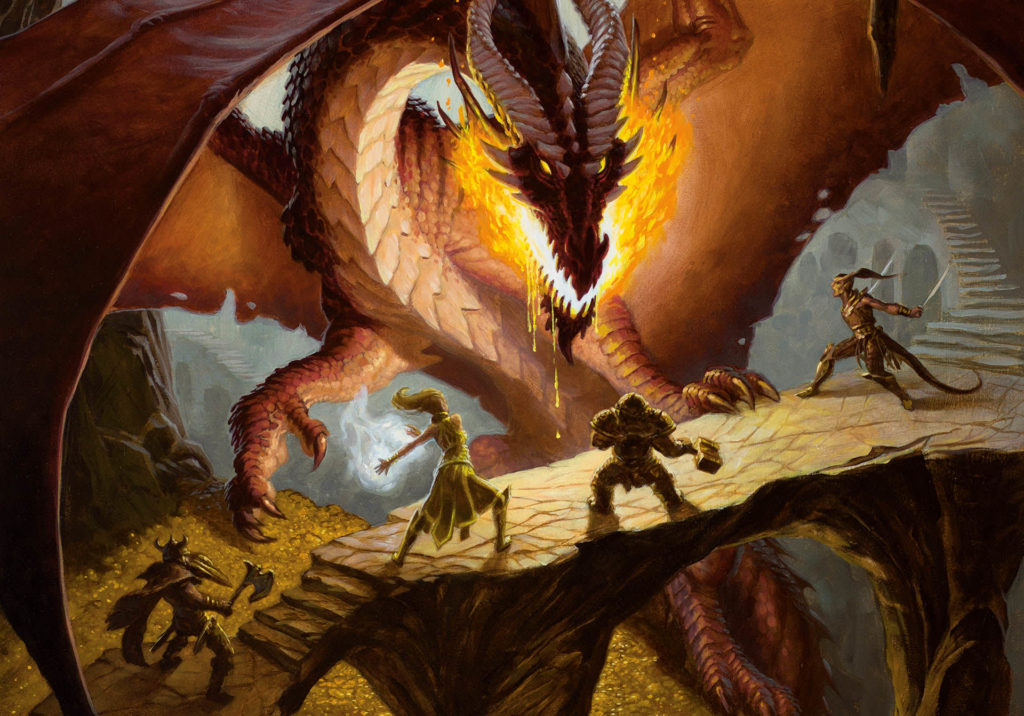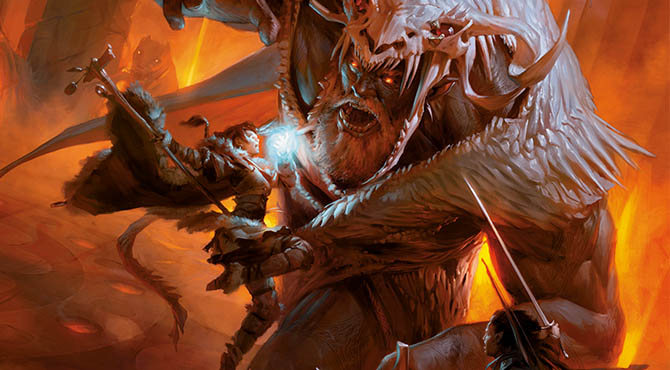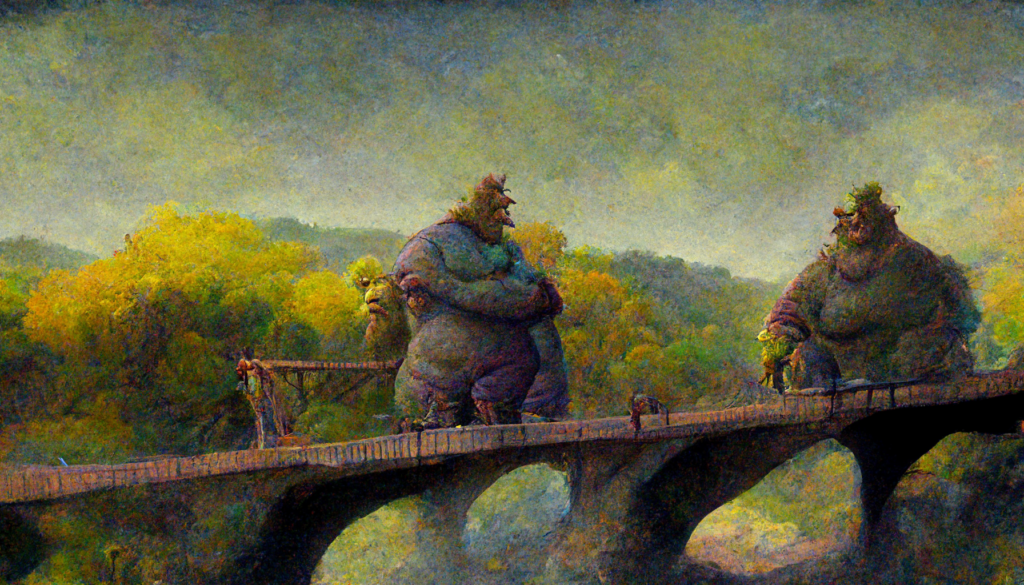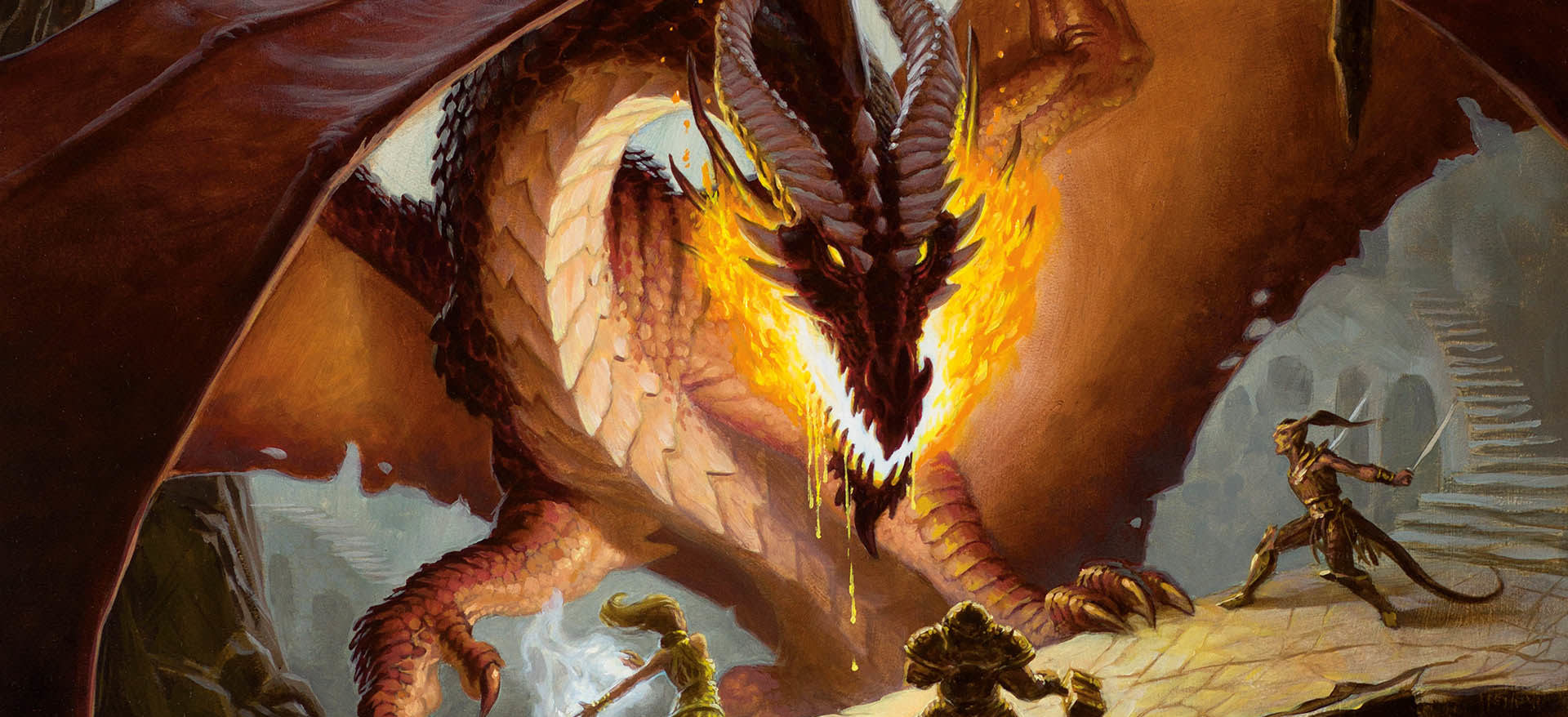For as long as Dungeons and Dragons has existed, combat has been one of it’s core pillars. This makes quite a bit of sense when you remember that the D&D originates from wargaming. In the early days of D&D you basically had exploration and combat. The roleplaying and narrative side of the game was secondary. However, as Dicebreaker notes, this aspect of the game expanded significantly over the last five decades, especially with the recent rise in popularity of live plays. So how much combat does Dungeons and Dragons need? Well, let’s talk about it a bit.
How much combat does Dungeons and Dragons need?
Okay, so the short answer is: as much as you and your players want. Honestly you could run games with no combat at all if you wanted to! As with most things in D&D and other roleplaying games, what you focus on is really going to depend on the table you are playing at. A couple of years ago I was regularly running D&D games with three different groups weekly and the expectations varied wildly across the groups.

The first group thrived on combat. Battles in D&D were how they would unwind at the end of a work day, and so they preferred for most of a session to be spent in combat with a few short opportunities for roleplaying and exploration. The second group preferred a close balance, their sessions should have a relatively even balance of combat, roleplaying, and exploration. The third group – my current group – enjoys a lot of roleplay with emphasis on natural flow, combat occurs when it fits the narrative rather than just for the sake of having combat (though some of them do get a bit antsy when we’re away from combat too long). Sometimes we have entire sessions with no combat at all!
D&D With Less Combat?
So with a game designed around combat, what happens when you start to wean off of it? The Dungeon Master’s Guide says that adventurers have the resources for 6-8 medium and hard encounters per day (between long rests). This is not a rule, it’s not even necessarily a recommendation, it’s just a statement of how far the characters can be stretched. Some days this is fine, some days it will absolutely feel forced.

A couple of important points to keep in mind:
- An adventuring day is not a single session. One of my campaigns has been running for over two years and only about two weeks have passed in game!
- An “encounter” absolutely does not have to be combat.
In my games, most combat encounters exist to serve a purpose. That can be related to the story, setting a tone, or establishing a setting. So-called “random” encounters are not something I use frequently, but they can be useful for establishing the danger of an area or helping to give the players a sense of danger/urgency.
I also make a point of using a lot of encounters that are not designed to be combat based. Does that mean their wont be combat? Not necessarily, players are very unpredictable and will sometimes pick fights where I don’t expect them to. Players are fun chaos. However, there are lots of things that require the players to interact carefully, problem solve, mediate, sneak, etc.
For example: the adventurers spot a bridge ahead where two large creatures, ogres perhaps, are arguing. Classically, this would be set-up for a combat encounter, which is a fine option. However, there are many other ways for a group to engage and approach this situation. Maybe they will choose to attempt to sneak past, or join in conversation with the pair and mediate, who knows! The point is that it doesn’t have to be a fight and overcoming the encounter can still net experience for doing so – if you are using experience.

The Benefits of Less Combat
Other than the benefit of running a more roleplaying and narratively driven game, I’ve noticed a few benefits of less combat that are worth noting. First, the adventurers get to do more! Combat in D&D can be very slow and drag out, especially if you are running a group of six or more players. By planning for multiple encounters you can really limit the other things that can happen in a session.
Secondly, something that I really enjoy, it’s caused the players to stop “saving” abilities for inevitable combat encounters. My players will frequently use class abilities and spells in a variety of non-combat situations! Due to this, most days they are still using up most of the resources, but more creative ways and often roleplaying situations.
Combat in Your D&D Games
As I said before, play the game in the way that is the most fun for you and the people at your table. If that means lots of combat, then do that! If you are interested in running the game with less combat, it totally works and you should try it! I’ve really enjoyed what reducing combat encounters has done to my game and the way players approach problems.
How much combat do prefer in your D&D games?



Fair points. I’ve always found combat to be the least interesting part of sessions, and thankfully my players mostly agree with that. If necessary combat looks like it is going to go on for more than 2 rounds I make some on the fly adjustments to make it a quicker affair (bigger hits and less health for baddies) so the danger persists but the duration is shorter.
I love the idea of faster, more explosive combat. That’s part of my plan with my upcoming Halloween one-shot!
this is one of the reasons I don’t like the 5th edition of d&d; the rules given focus too much on combat and not enough on exploration (I exclude roleplaying from this as it doesn’t really require rules). The majority of any given character’s abilities revolve around what it can do during combat. This is fine if you want to run a combat-heavy hack & slash game at which point I’d actually recommend the 4th edition because it leans in to that far heavier.
When you remove combat from the 5th edition, you realize how little rules there really are. When we look at games that are heavier into the roleplaying aspect, you get things like World of Darkness which has all sorts of super-hero like abilities for dominating week minds, traversing through shadows, creating illusions in a target’s mind, etc. You can very easily run entire sessions of the game with no combat and it feels fine – most of your abilities can still be utilized.
So let’s ignore roleplaying and look at exploration – what would an exploration game look like? This brings up the classic hex-crawl of old, perhaps with domain-play sprinkled in. These are two things 5e doesn’t do. Too many cantrips trivialize the challenges of exploring.
This all seems very doom and gloom which I don’t want so I want to bring up how we might change combat in 5e, a game that seemingly requires it, for the better. Morale & Reactions. This, to me, is the most important set of rules from older editions that one can use. (Almost) Every enemy you encounter rolls a reaction roll when you meet them. Obviously programmed creatures like golems, mindless beasts, battle-raged berserkers, purely evil and alien beasts like ilithid and beholders, etc wouldn’t need to roll this, but a common band of orcs or a frost giant hunting party has their own motivation – what do they want and are they willing to stab strangers to get it. So they roll reaction. They might be hostile, they might be friendly, they might be indifferent. This allows you to use these encounters as sources of information and as allies for other fights. Better yet, you play two groups of creatures against each other as if you’re Yojimbo or Clint Eastwood. And if combat does break out? Morale. Once a) the leader has died, b) the first death on the enemy side occurs, and c) they lose 50% of their group, they’re rolling morale. Not every combat needs to drag out to the bitter end. Are these creatures willing to die for this or will they surrender or retreat?
tl;dr When we might want to reduce combat in a game that requires combat for many of the characters to feel useful, we must find ways to still engage with combat meaningfully
“what do they want and are they willing to stab strangers to get it.” and “Are these creatures willing to die for this or will they surrender or retreat?” are two points I constantly try and refer back to when I’m DMing, most people/creatures will not fight to the death for nothing.
You make some awesome points, D&D is definitely designed heavily with combat in mind, so it’s hard for some classes to feel useful in it’s absence. World of Darkness does some amazing things with absolutely no combat necessary.